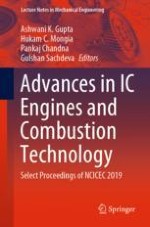
2021 | OriginalPaper | Chapter
Impact of Flowfield on Pollutants’ Emission from a Swirl-Assisted Distributed Combustor
Authors : Joseph S. Feser, Serhat Karyeyen, Ashwani K. Gupta
Published in: Advances in IC Engines and Combustion Technology
Publisher: Springer Singapore
Activate our intelligent search to find suitable subject content or patents.
Select sections of text to find matching patents with Artificial Intelligence. powered by
Select sections of text to find additional relevant content using AI-assisted search. powered by